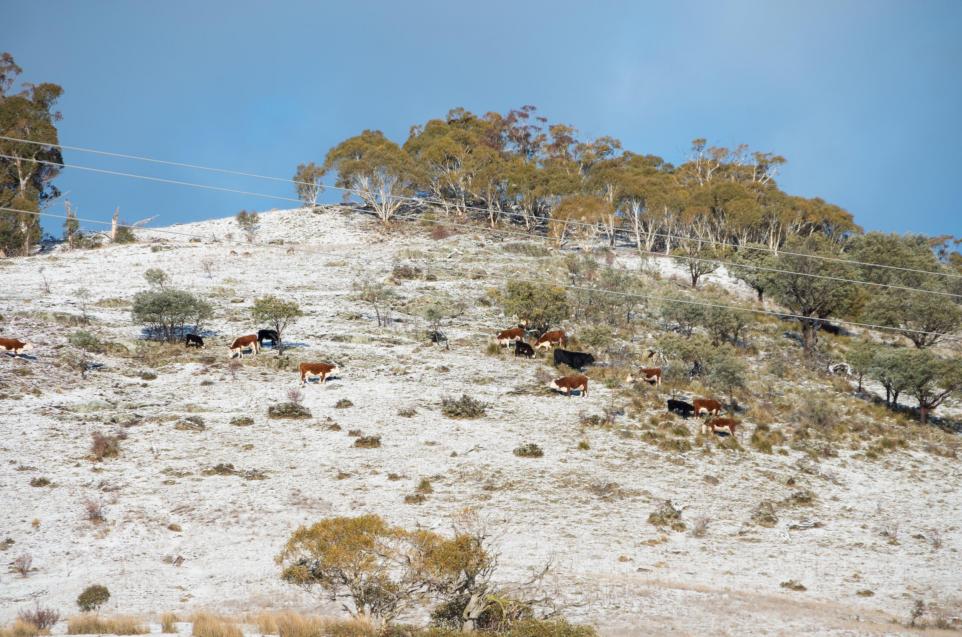House of Assembly South Australia
13 November 2019
FRASER ELLIS
Member for Narungga in the House of Assembly
Mr ELLIS (Narungga) (12:36): I move:
That this house—
(a) acknowledges that 21 November is National Agriculture Day;
(b) celebrates our farmers, fishers, producers and related businesses and organisations who help feed,
clothe and grow our social and economic wellbeing across South Australia; and
(c) recognises the vital economic contribution by agriculture to South Australia’s economy.
I rise today to move that this house acknowledges that 21 November is National Agriculture Day and,
in so doing, recognises the vital economic powerhouse for this state and nation that is the agriculture
sector. This motion suitably recognises the contribution of our farmers, fishers, primary producers
and all associated businesses and organisations who feed, clothe and grow our social and economic
wellbeing across South Australia and across Australia.
Not enough is made of the fact that food and farming make up Australia’s biggest sector. In
2017-18, it was valued at a combined $60 billion. Not enough is made of the fact that Australia grows
93 per cent of its own food and exports two-thirds of its produce, directly employing more than
250,000 Australians. Not enough is made of the fact that Australian grain farmers play an important
role as stewards of the land, sustainably managing over 23 million hectares of agricultural land,
creating over 100,000 jobs in grains and 198,000 jobs in food manufacturing and helping to underpin
the social fabric of rural and regional Australia.
National Ag Day on 21 November is rightly and importantly loudly trumpeting those facts. In
my view, across the board, the value of agriculture and agribusiness in this nation and here in South
Australia is shamefully under-recognised, so I proudly stand to mark 21 November as National
Agriculture Day. I commend the National Farmers’ Federation for commencing this important annual
initiative in 2017 to better get the word out about just how much this nation and this state rely on the
contribution of our estimated 85,700 agricultural businesses across Australia.
They work tirelessly and triumph often against the elements. They are at the mercy of when
and where it rains, drought, fire and flood, disease, competing land uses and fluctuating market
prices. The many risks of farming were again on show last week in the Riverland, when a
three-minute hailstorm wiped out the majority of the entire year’s work and investment for multiple
growers of grapes, stone fruits, nuts and grain.
Ongoing drought across the country serves to highlight the knock-on effect that goes through
whole communities. We have long understood that when it is good for farmers on the land it is good
for shopkeepers, mechanics, tyre fitters, rural merchandise distributors, shearers and casual farm
workers, machinery and vehicle dealers, etc. The list goes on. The agriculture and livestock
industries drive local economies, especially rural and regional local economies.
So often, the adversity and struggles of farmers—what needs to be done to better support
them, how bad the drought is, the storm damage or the falling produce prices—are the only stories
cutting through media. More must be done to get the success message out and the fact that this
nation and this state are ever reliant on primary production and farming communities for their
continued prosperity.
The gross value of the Australian agriculture industry increased by $3.7 billion, from
2014-15 to $58.1 billion in 2015-16. Australian grain farmers play an important role as stewards of
the land, sustainably managing over 23 million hectares of agricultural land, creating over
100,000 jobs in grain and 198,000 jobs in food manufacturing, and helping underpin the social fabric
of rural and regional Australia. Here in South Australia, primary industries and agribusiness revenue
in 2017-18 was $14.8 billion, directly and indirectly contributing $19.7 billion to our great gross state
product.
The sector in this state supports an estimated 152,000 jobs and that is approximately one in
five working South Australians somewhat connected to this industry. Direct international exports grew
by 3.4 per cent in 2017-18 to reach $6.7 billion. It is very clear that the future prosperity of this state
and our nation remains heavily reliant upon the performance of the sector. It is important that all
these facts are better promoted and that the farmers in this state and across the country are better
recognised for the job they are doing for us all.
The mantra of National Agriculture Day is that farmers deserve recognition for putting the
world’s best food on our tables, and the world’s best fibre on our backs. With 150 registered ag day
events last year, it is expected there will be even more celebratory breakfasts, morning teas, sausage
sizzles, lunches and market events across cities and rural areas around our nation next week. I wish
the best for all involved in planning and carrying out those events and I hope they will be successful.
According to the ABS, there are 15,000 South Australian farmers. I would like to break down
the individual sector figures to ram home the vital economic importance of our primary industries
across our regions. Incredibly, despite drying conditions, such is the expertise of our farming
entrepreneurs that South Australia’s grain harvest for 2019-20 is estimated at 6.2 million tonnes for
a farmgate value estimated at $1.8 billion, which is slightly higher than the last two seasons. All this
activity is created on just some 5 per cent of the arable food producing land that is still available in
this state.
I look forward to continuing to work with colleagues and stakeholders on future policy areas
to ensure increased protection for our farmers and their food producing soil that is so vital for our
agriculture and agribusiness industries. In celebrating the role of agriculture and primary industry
around the state, the point is also made that, of all state jurisdictions, South Australia relies, and has
always done, most heavily on agriculture to fuel it state’s economy, well epitomised by the grapes
and wheat that feature so prominently on the carpet at our feet in this chamber, such has been the
longstanding reliance on these important sectors in South Australia.
The need for such protections for our prime, reliable, cropping, high-yield, increasingly
scarce land is clear. In 2017-18 the grain industry—that is, wheat, barley, hay, feed grains, canola
and lentils—generated $4.2 billion in revenue. These commodity exports from around the state were
worth $2.3 billion. The primary production value of our livestock industries—beef, sheep, pig and
chicken meat—totalled $1.9 billion in 2017-18. Over 11 million sheep, 950,000 head of cattle and
57 million kilograms of wool are produced annually for a total production and processing revenue in
the vicinity of $2.4 billion.
In 2017-18, the dairy sector increased its production value by 11 per cent to $217 million.
The wool sector production was worth $568 million. South Australia’s cattle and sheep industries
produced $3.4 billion in revenue and South Australia’s beef industry gross revenue exceeded
$1.3 billion. These are extraordinary contributions made by those sectors.
National Ag Day also celebrates the role of our seafood and forestry industries, both just as
vital to our state’s economic future as our grain and livestock sectors. In 2017-18, South Australia’s
seafood industries generated 70,000 tonnes of seafood, adding $814.5 million to our state gross
product with a farmgate value of $465 million. The wild catch and aquaculture industries generated
total revenue of $515 million with tuna exports alone valued at $115 million and the southern rock
lobster fishery—wonderful fishery that it is—at $125 million. Our forestry sector revenue totalled
nearly $2 billion with plantations covering some 176,000 hectares.
Another important underlying fact when citing all these revenue figures is that agriculture is
the largest employer in many regions or rural and remote communities. Farming, primary production
and agribusiness are the backbone of regional communities across South Australia and Australia,
supporting retail and service industries that together all sustain life and entire populations outside
capital cities.
In 2017, there were over 85,000 agricultural businesses in Australia, such is the crucial role
the sector plays in job creation and regional sustainability. I am proud to be part of the Marshall
Liberal government that has demonstrated in so many ways that it backs regional South Australia
and recognises the incredibly valuable economic and employment role that primary producers and
all the associated industries play in the wellbeing of this state as a whole.
Our $750 million Royalties for Regions program and $150 million Regional Growth Fund are
flagship policies. But also, this government, via its ‘growth state’ initiative that is underway, has the
plan and vision to grow by 3 per cent per annum South Australia’s $14.8 billion food, wine and
agribusiness sector. We have instigated the development of the state’s first Grain Industry Blueprint
and we have undertaken the first trials of industrial hemp in South Australia for a projected $3 million
per annum industry.
We have introduced farm debt mediation and invested $7.5 million in a new red meat and
wool growth program. There is the well overdue $25 million investment in the rebuild of the
100-year-old South Australian dog fence to benefit the livestock industry and the $3.8 million
announced to protect South Australian sheep and cattle industries from biosecurity threats. We have
also waived stamp duty on multi-peril crop insurance, slashed the ESL bills to support farmers and
communities that were so cruelly increased without notice by the former government, and abolished
payroll tax for small business.
The Marshall Liberal government has introduced the Genetically Modified Crops
Management (Designation of Area) Variation Regulations to lift the moratorium on GM food crops on
mainland South Australia from 1 December to increase farm profitability and drought resistance. It is
very important that that regulation be allowed to pass through the other house, for it will play a vital
role in helping farmers who are doing it tough because of drought and other conditions to improve
the profitability of their businesses. It will allow the industry to bring itself into line with other
jurisdictions around the country so that they are not lagging behind in old times and so that they can
access the newest technology and the newest means by which they can improve their business
profitability.
We are investing in new automatic weather stations and AgTech demonstration farms. We
have ensured that 29 new mobile phone towers for regional South Australia have been installed to
support farmers and farming communities. We have introduced tougher laws for trespassing on ag
land and have recently announced the inaugural winner of the new South Australian Agricultural
Town of the Year awards to highlight the vital role that agriculture and primary industries play in
regional communities. This new program, coincidentally, was launched this time last year on National
Agriculture Day.
These are all initiatives that demonstrate the priority placed by the Marshall Liberal
government on providing deserving support and recognition of this state’s primary industries being
the economic and vital powerhouse that they are. Only last week this government, in partnership with
the federal government, reached a historic agreement to increase production at the Adelaide
Desalination Plant to provide 40 gigalitres of water this financial year to enable the release of the
equivalent amount to help drought-affected farmers around the nation and, with this deal, secured a
further $10 million for the South Australian Drought Resilience Fund to help South Australian farmers
in need.
In the last 18 months or so, since becoming the member for Narungga, I have been privileged
to meet so many hardworking farmers, agribusiness owners and skilled, passionate people from
primary industry, supporting organisations and companies, who all back and invest and devote their
lives to our agriculture and primary production sector and to making this state a better place. I have
had the honour, too, of meeting agricultural researchers and scientists. I have toured the Roseworthy
and Waite campuses and had my eyes widened and opened to the possibilities that agriculture and
primary production offer this state and all who live here. There are some seriously exciting things
happening at those research facilities.
To mark the 2019 National Agriculture Day, this motion applauds and acknowledges the
outstanding contribution of our agriculture, food and beverage, primary production and agribusiness
sectors. The significance of this sector is further heightened when compared with this state’s mineral
sector—also vitally important, I must say. Regionally based mining and gas production accounts for
more than 35 per cent of South Australia’s traded exports.
National Agriculture Day will be held on 21 November around the nation to celebrate the role
that agriculture and communities outside the cities have had in forming our nation and the future
crucial role they will play in sustaining the future of our state and nation. It is a valuable day to sell
the virtues of our regional cities and towns, to sell the opportunities available in primary industry and
regional centres and to sell the exciting future ahead. The federal government’s plan is to boost the
size and scale of the agriculture, fishery and forestry industries, from their current $60 billion to
$100 billion by 2030, and the Marshall Liberal government continues to play and will continue to play
its part in this vision.
Already underway is our very important work in developing SA’s new regional development
strategy. Its purpose is to deliver a government plan for investment, support and priorities, as stated
by the Minister for Primary Industries and Regional Development. This is a step that is necessary to
ensure that regional SA maintains and grows its economic capability and supports people in their
decision to live in regional areas. In closing, I once again thank all in this sector, which is our biggest
in the nation and our lifeblood across regional communities. You do a wonderful job. I commend the
motion to the house.





